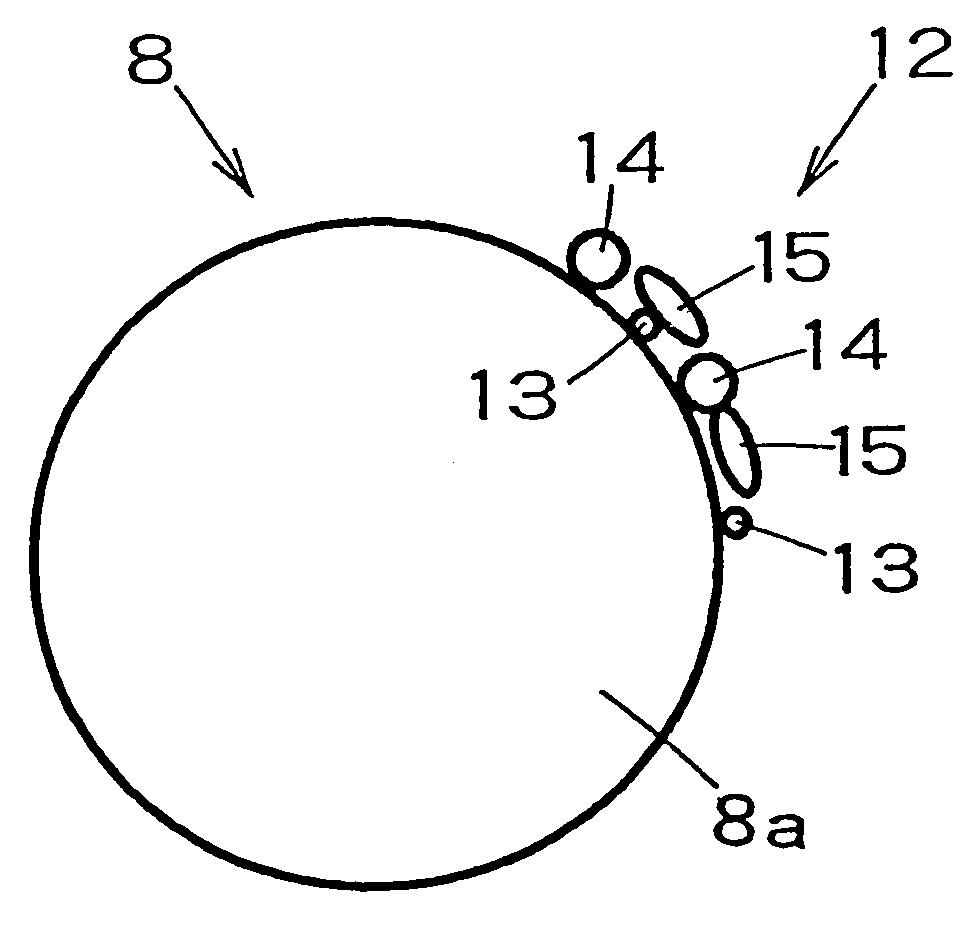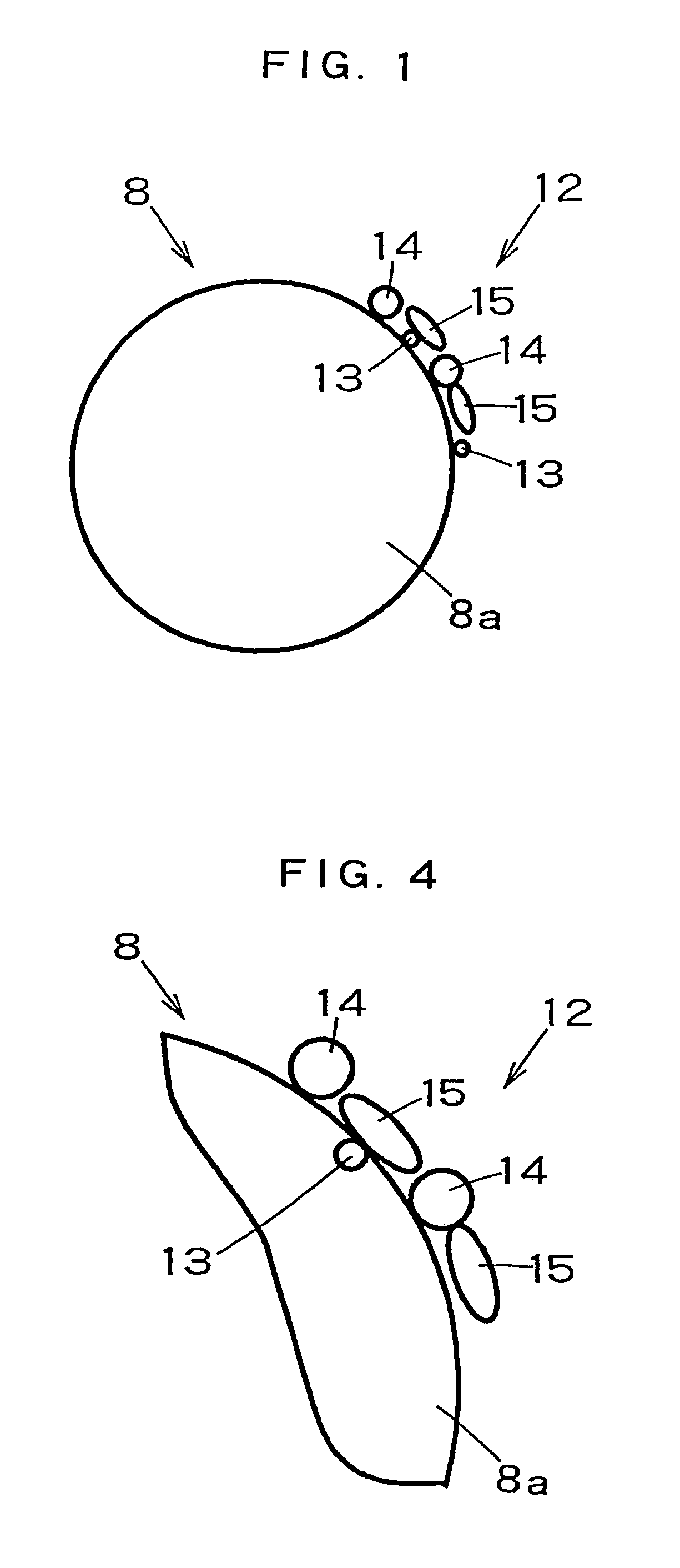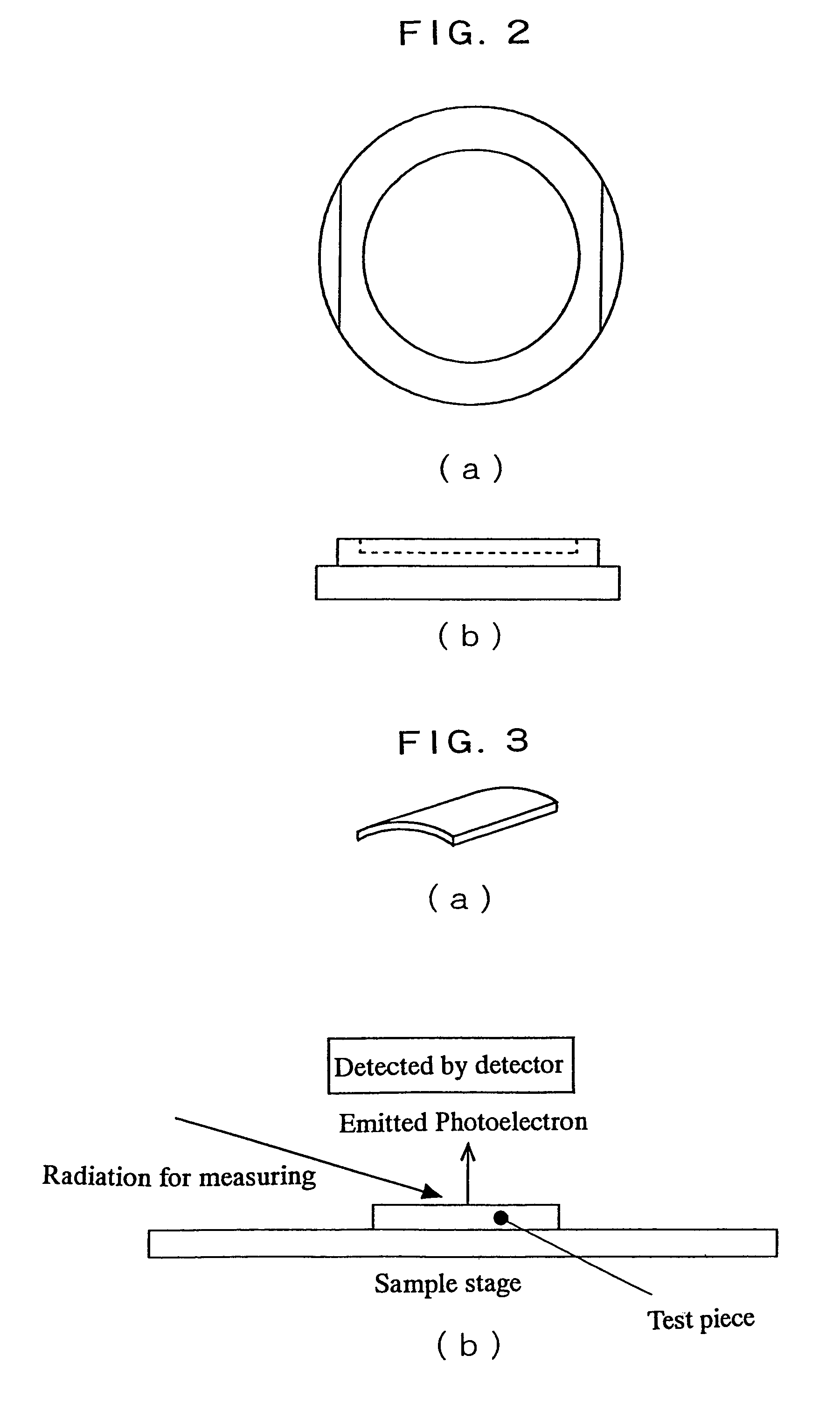Non-magnetic single-component toner, method of preparing the same, and image forming apparatus using the same
a toner and non-magnetic technology, applied in the field of non-magnetic single-component toners, can solve the problems of increasing increasing the charge of toner particles, and not getting clear color images, so as to improve the transfer efficiency, reduce the amount of fog toner, and make the charging property further stabl
- Summary
- Abstract
- Description
- Claims
- Application Information
AI Technical Summary
Benefits of technology
Problems solved by technology
Method used
Image
Examples
example 16
[0422]The work functions of external additives 12 used in Example 16 are shown in Table 17. In this case, alumina-silica combined oxide fine particles were used as the metallic oxide fine particles 17 in Example 16.
[0423]
TABLE 17NormalizedWork functionphotoelectronExternal additives(eV)yield(1)Vapor-phase silica5.225.1(12 nm), treated withhexamethyldisilazane (HMDS)(2)Vapor-phase silica5.245.2(12 nm), treated withhexamethyldisilazane (HMDS)(3)Rutile / anatase type5.648.4titanium oxide (20 nm),treated with silane coupling agent(4)Alumina-silica combined5.184.6oxide fine particles(17 nm), treated with 5.6214.6dimethylsilane (DMS),mixed crystal ratio of 65:35
[0424]The alumina-silica combined oxide fine particles have a point of inflection so as to have two work functions. Therefore, the two work functions of the alumina-silica combined oxide fine particles as the external additive (4) are shown in Table 17. Because of the two work functions, the aforementioned triboelectric charging site...
example 17
[0429]Image forming tests were conducted with each of the toners 1-(1) through 1-(6) used in the aforementioned Example 16 according to the non-contact developing process schematically shown in FIG. 5 and according to the contact developing process schematically shown in FIG. 6 by using the full color printer as shown in FIG. 8 employing the aforementioned organic photoreceptor (OPC 1) 1, the aforementioned development roller 11, the intermediate transfer belt 36 of the intermediate transfer device 30, and the toner regulating member 7. The tests according to the non-contact developing process were conducted under conditions that the dark potential of the organic photoreceptor 1 was −600 V, the light potential of the organic photoreceptor 1 was −80 V, the DC developing bias was −300 V, the AC developing bias (P-P voltage): 1320 V, and the AC frequency was 2.5 kHz. On the other hand, the tests according to the contact developing process were conducted under conditions that the dark p...
example 18
[0504]The SiO2 particles-1, the SiO2 particles-2, Al2O3 particles, the mixed oxide particles-1, the mixed oxide particles-2, and the combined oxide particles were added to toners 1, respectively, in an amount of 0.5 weight % each and mixed by using a commercial blender, thereby making toners 1-1 through 1-6.
[0505]Images were formed to have a solid image density in the order of 1.3 according to the contact developing process by using full color printers as shown in FIG. 8 each employing the development roller, the organic photoreceptor, and the transfer medium which are obtained in the above, with each of the toners set in each cyan developing device. The conditions for forming images are that the dark potential was −600 V, the light potential was −100 V, the developing bias was −200 V, the supply roller and the development roller were in the same potential, and the primary transfer voltage was +300 V.
[0506]The transfer efficiency to the photoreceptor and the amount of fog toner on t...
PUM
| Property | Measurement | Unit |
|---|---|---|
| particle diameter | aaaaa | aaaaa |
| mean primary particle diameter | aaaaa | aaaaa |
| mean primary particle diameter | aaaaa | aaaaa |
Abstract
Description
Claims
Application Information
 Login to View More
Login to View More - R&D
- Intellectual Property
- Life Sciences
- Materials
- Tech Scout
- Unparalleled Data Quality
- Higher Quality Content
- 60% Fewer Hallucinations
Browse by: Latest US Patents, China's latest patents, Technical Efficacy Thesaurus, Application Domain, Technology Topic, Popular Technical Reports.
© 2025 PatSnap. All rights reserved.Legal|Privacy policy|Modern Slavery Act Transparency Statement|Sitemap|About US| Contact US: help@patsnap.com



